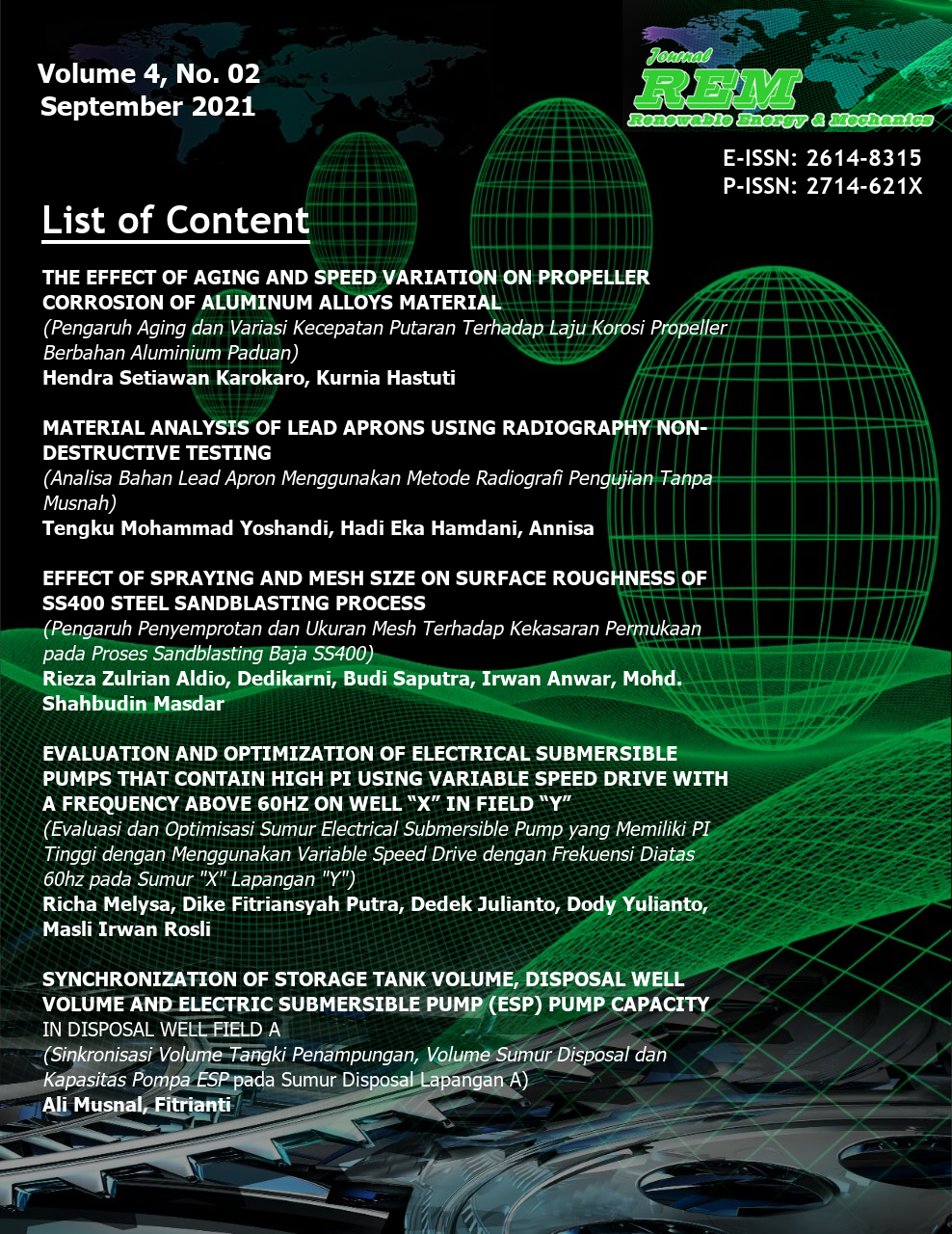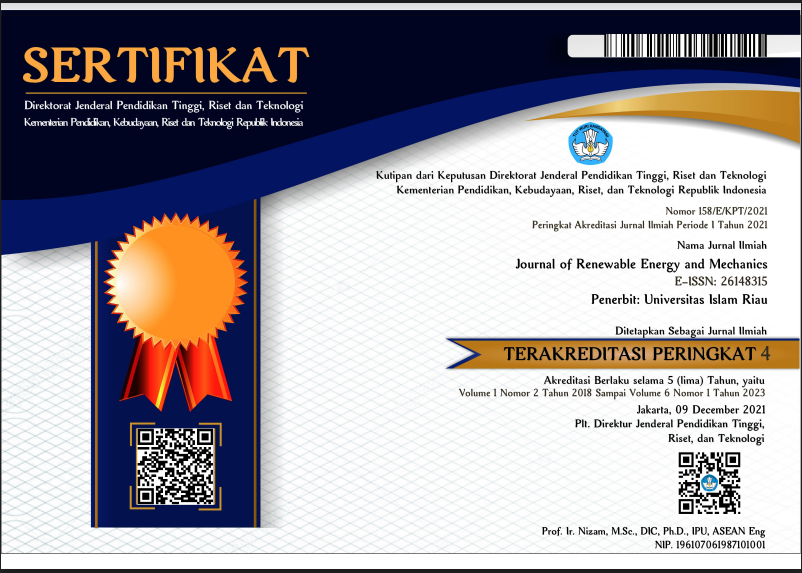The Evaluation and Optimization of Electrical Submersible Pump Wells That Have A High PI Using Variable Speed Drive with Frequency Above 60Hz in "X" Field "Y" Wells
EVALUATION AND OPTIMIZATION OF ELECTRICAL SUBMERSIBLE PUMP WELLS THAT HAVE A HIGH PI USING VARIABLE SPEED DRIVE WITH FREQUENCY ABOVE 60HZ IN "X" FIELD "Y" WELLS (EVALUASI DAN OPTIMISASI SUMUR ELECTRICAL SUBMERSIBLE PUMP YANG MEMILIKI PI TINGGI DENGAN MENGGUNAKAN VARIABLE SPEED DRIVE DENGAN FREKUENSI DIATAS 60HZ PADA SUMUR "X" LAPANGAN "Y")
DOI:
https://doi.org/10.25299/rem.2021.vol4.no02.6910Keywords:
electric submersible pump, Autograph PC, production rateAbstract
The condition of a well if it is produced continuously will cause reservoir pressure to fall, and the flow rate will also go down, as a result the productivity of the well will also decrease. For this reason, there is a need for energy that can help lift fluid up to the surface. In the primary method there are 2 stages of production, namely natural flow where oil is raised directly through the tubing surface, and artificial lift is the method of obtaining oil by using the aid of additional tools. In the oil industry there are various types of artificial lifts, one of which is an electric submersible pump (ESP).
Electric Submersible Pump is an electric pump that is immersed into a liquid. This pump is made on the basis of a multilevel centrifugal pump where each level has an impeller and iffuser which aims to push the fluid to the surface. ESP planning is strongly influenced by the roductivity of production wells. The rate of fluid production influences the selection of pump type and size. This is because each pump has its own production rate based on the type and size of each pump used.
In the course of producing oil, there will certainly be a problem that will cause a decline in production, therefore it is necessary to evaluate and redesign the ESP pump, in an effort to optimize the production potential of these wells. In this study an evaluation of the performance of the electrical submersible pump will be carried out and a pump redesigned to optimize production using AutographPC software on the well X in the field Y
Kondisi suatu sumur jika diproduksikan terus-menerus akan mengakibatkan tekanan
reservoir turun, dan laju alir akan turun pula, akibatnya produktivitas sumur akan turun
juga. Untuk itu perlu adanya tenaga yang dapat membantu mengangkat fluida sampai
kepermukaan. Dalam metode primer terdapat 2 tahapan produksi yaitu natural flow
dimana minyak terangkat kepermukaan langsung melalu tubing, dan artificial lift
merupakan metode perolehan minyak dengan menggunakan bantuan alat tambahan.
Dalam dunia perminyakan ada berbagai macam jenis pengangkatan buatan salah
satunya adalah electric submersible pump (ESP).
Electric Submersibel Pump merupakan pompa listrik yang dibenamkan kedalam cairan.
Pompa ini dibuat atas dasar pompa sentrifugal bertingkat banyak dimana setiap tingkat
mempunyai impeller dan diffuser yang bertujuan untuk mendorong fluida kepermukaan.
Perencanaan ESP sangat dipengaruhi oleh produktivitas sumur produksi. Laju produksi
fluida berpengaruh terhadap pemilihan jenis dan ukuran pompa. Hal ini dikarenakan
tiap-tiap pompa memiliki laju produksi sendiri berdasarkan jenis dan ukuran tiap- tiap
pompa yang dipakai.
Dalam kegiatan memproduksikan minyak tentu suatu saat akan terjadi permasalahan
yang mengakibatkan menurunnya produksi, Oleh karena itu perlu dilaksanakan evaluasi
dan design ulang pompa ESP, sebagai upaya untuk mengoptimalkan potensi produksi
sumur-sumur tersebut. Pada penelitian ini akan dilakukan evaluasi kinerja electrical
submersible pump dan melakukan desain ulang pompa untuk optimasi produksi
dengan menggunakan software AutographPC pada sumur X lapangan y
Kata kunci: electric submersible pump, AutographPC, laju produksi













